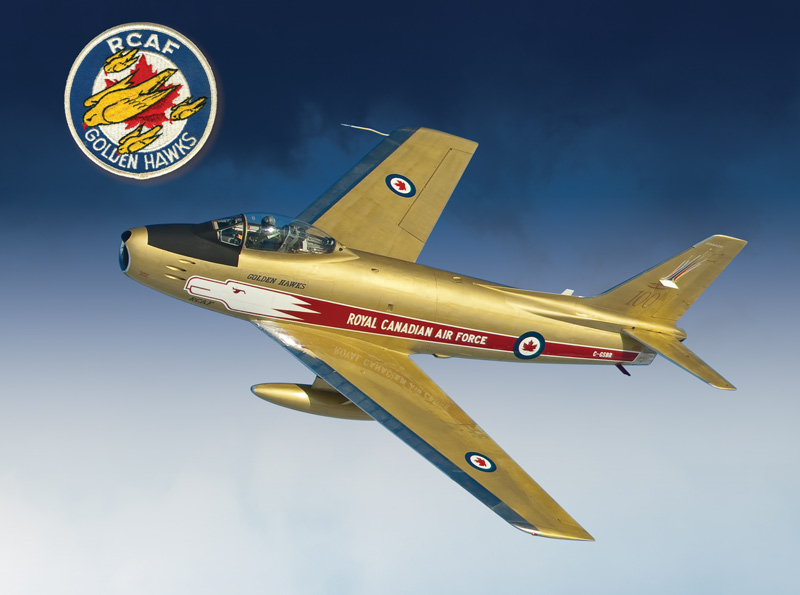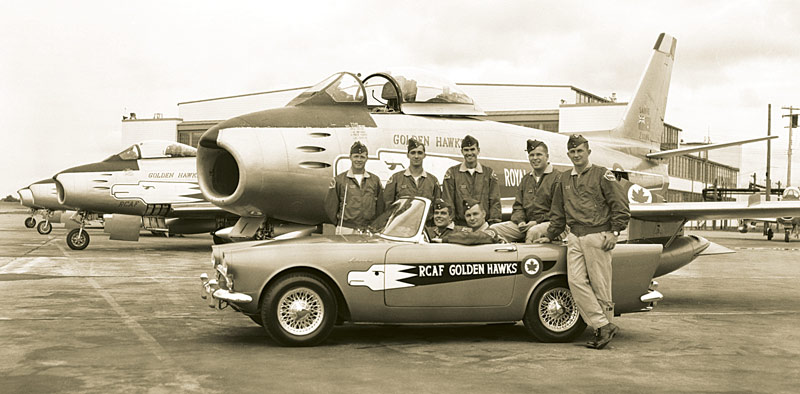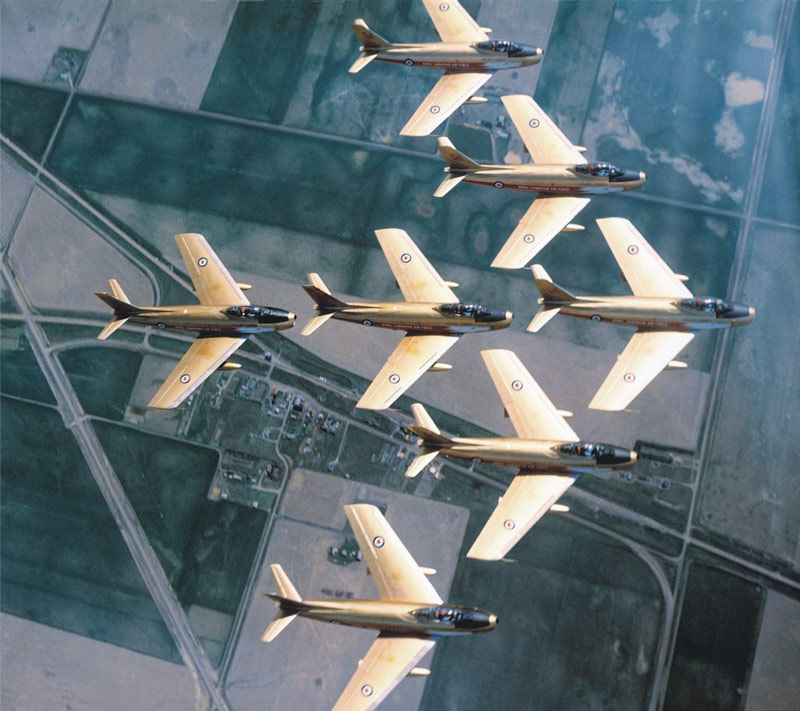
From 1951 to 1963, the CL-13 Sabre was the Royal Canadian Air Force’s front-line “dog-fighter.” But the Canadian-built aircraft may be best remembered by everyday Canadians for its five years of flight in domestic airspace, decked in flashy gilt that became symbolic of the RCAF’s first official national aerobatics team: the Golden Hawks.
Enchanting more than 15 million Canadians and Americans during 317 performances, the Golden Hawks set the bar for their successor, the Snowbirds, all while inspiring untold numbers of young people to enlist in the air force.
Retired lieutenant-colonel Dan Dempsey, author of A Tradition of Excellence: Canada’s Airshow Team Heritage, was one of many Canadian adolescents inspired by the Hawks. During his career he led the Snowbirds in their 20th anniversary and 1,000th official performance and he even flew an F-86 Sabre in Golden Hawks livery in 2009.
“What they were trying to do was inspire kids to do something special with their lives,” said Dempsey.
Formed on March 1, 1959, to mark the 50th anniversary of powered flight in Canada and the 35th anniversary of the RCAF’s formation, the Golden Hawks were originally meant to last only until later that year. Due to their immense popularity, however,
garnering $1 million in publicity in 1959 alone, the team continued performing air shows for half a decade.
One Toronto Star Weekly headline called them “The Glamour Boys of the Air Force.” Indeed, Golden Hawks pilots achieved celebrity status for their grace and skill in the sky.
But on Feb. 7, 1964, the Golden Hawks were disbanded due to budget cuts.
“It was like taking a spear through the heart,” said Dempsey.
Regardless, the aerial ballet team might never have taken off if it weren’t for its aircraft of choice, the CL-13 Sabre. Dempsey attributed the Golden Hawks’ success to the aircraft: “The airplane itself was legendary.

“The airplane itself was legendary.”
—Retired lieutenant-colonel Dan Dempsey
“It was the best day fighter in the world.”
The CL-13 was a Canadian version of the North American F-86. When the federal government chose it for RCAF service, North American Aviation and Canadair joined forces to manufacture 100 F-86As, designated the CL-13 Sabre Mk 1.
By The Numbers
1184
Total number of CL-13 Sabres used by the Royal Canadian Air Force
15
Minimum altitude in metres for solo passes of the CL-13
3
Golden Hawks pilots who died in CL-13s during training sessions
15 million
Estimated number of people who saw the Golden Hawks perform in CL-13s

Canadair’s next model, the Mk 2, included an “all flying” tail plane and flat windscreen. The Mk 5 was the first production version equipped with a Canadian engine, the Orenda 10. Boasting 6,355 pounds of thrust, the Orenda required modifications to the fuselage and engine mounts. The Mk 5 also included small wing fences and a fixed leading edge to improve high-altitude performance. The model, however, had trouble with low-speed handling.
While the Golden Hawks initially flew Mk 5s, they ended up flying superior Mk 6s. With an Orenda 14 engine, 7,275 pounds of thrust and wing leading slats, the Mk 6 could easily perform the Golden Hawks’ trademark stunts.
Equipped with top-tier aircraft, pilots and ground crew, the Golden Hawks rivalled the U.S. Navy Blue Angels and the U.S. Air Force Thunderbirds and never had a serious incident during a performance.
Said one Golden Hawks audience
member: “[They were] the best team there was anywhere, full stop.”
Advertisement












